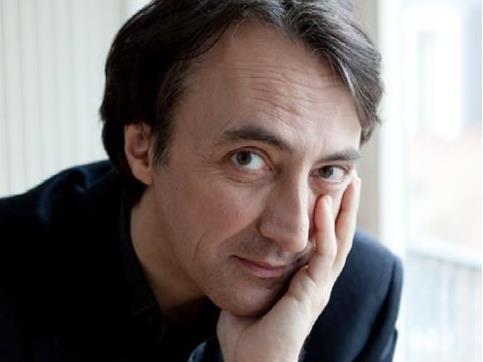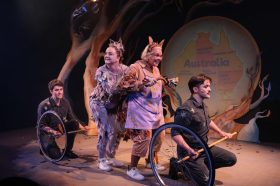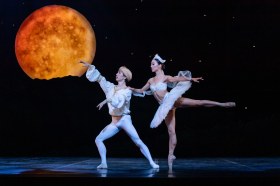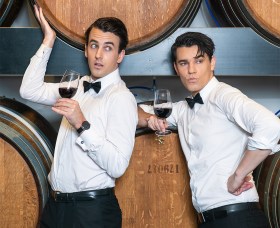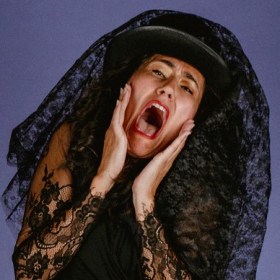Jean-Efflam Bavouzet, piano. Via MSO.
The Melbourne Symphony Orchestra was led through this wide-ranging program by German conductor André de Ridder who last visited in 2015 to direct the MSO’s contemporary Metropolis Festival. The C major 34th Symphony by Wolfgang Mozart was composed in 1780 and is still a great concert opener with its fanfare flourishes announcing the overture-like first movement. It was written just prior to Mozart’s move to Vienna from Salzburg and tellingly breathes optimism, relief, freedom and hope. The second movement Andante di molto (più tosto Allegretto) scored for strings alone with divided violas for extra sonority and bassoon suffered from intonation problems. The theatrical third movement Finale: Allegro vivace featuring its catchy tarantella rhythm provided further evidence of how this attractive Symphony must have aided the composer’s reputation in the Austrian Capital. De Ridder’s direction was clear as crystal, his interpretation fresh, light and buoyant. This opening work provided some of the best playing in the concert.
The orchestra then more than doubled in size for South Korean Unsuk Chin’s Mannequin – Tableaux vivants for orchestra composed between 2014 and 2015. Receiving it first Australian performance, Mannequin was jointly commissioned by the Southbank Centre, Boston Symphony Orchestra, Danish National Symphony Orchestra and the Melbourne Symphony Orchestra. Based on the novella The Sandman by ETA Hoffmann this overly long work in four movements is described by the composer as an ‘imaginary choreography’. The work’s exotic collection of battery percussion performed by five percussionists included ratchet, vibraslap, fishing reel, wash boards, spring coil and thunder sheets. I have to admit that I found Mannequin at times directionless and often overly concerned with surface detail without deeper narrative. Occasionally there were some interesting Ligeti-like superimposed clusters but the work also relied on filmic gestural cliché. Again de Ridder’s direction was expressive and clear and his convincing interpretation encouraged a committed first performance by the orchestra.
A visit to the USA and hearing the recently composed Rhapsody in Blue by George Gershwin inspired Ravel to compose between 1929 and 1931 the jazzy Piano Concerto in G major. The soloist on this occasion was the distinguished French pianist Jean-Efflam Bavouzet, a protégé of Pierre Sancan whose recordings of the Ravel Piano Concertos achieved high acclaim in the 1960s. Bavouzet has recorded Ravel’s complete piano works and concertos (Gramophone Award in 2011) on Chandos. His performance of this effervescent composition was without technical flaw. The opening Allegramente crackled with energy though there was some untidy orchestral articulation. Guest principal Norwegian Eirik Haaland’s horn playing was especially fine throughout. The tender second movement that caused the composer so much trouble was touchingly conveyed and elegantly voiced by the soloist with some fine woodwind solos notably from principal clarinettist David Thomas. The movement never wallowed but at the same time the orchestra could have provided a more sonorous and emotionally invested accompaniment. Again the razor-sharp rapport and precise articulation demanded in the final Presto was absent from the orchestral accompaniment. Bavouzet, however, was lauded by the audience for his excellent performance and responded in gratitude by providing a superbly luminous rendition of Claude Debussy’s Reflets dans l’eau from Book 1 of Images as the encore.
So often Ravel’s choreographic orchestral poem La valse is programmed and interpreted as a light-hearted, tongue-in-cheek, end-of-concert bonbon when nothing could be further from the truth. Although the composer was typically vague about the intention of his ballet originally called Wien that was rejected by its commissioner Sergei Diaghilev, I cannot but help hearing the work as a danse macabre following WW1. Ravel served in this conflict and was never the same after it, one of his obsessions becoming clocks and a kind of maniacal preoccupation with motoric propulsion (Boléro was to follow in 1928). Though this performance was fair to good, beneath its glittering surface there was a lack of rich gestural grandeur, thump, edge, focus as well as a sense of elegance mixed with catharsis.
Rating: 3 1/2 stars our of 5
Melbourne Symphony Orchestra
André de Ridder, conductor
Jean-Efflam Bavouzet, piano
Hamer Hall, Arts Centre Melbourne
Thursday, 21 September, 2017
8pm
Presented by Melbourne Symphony Orchestra
